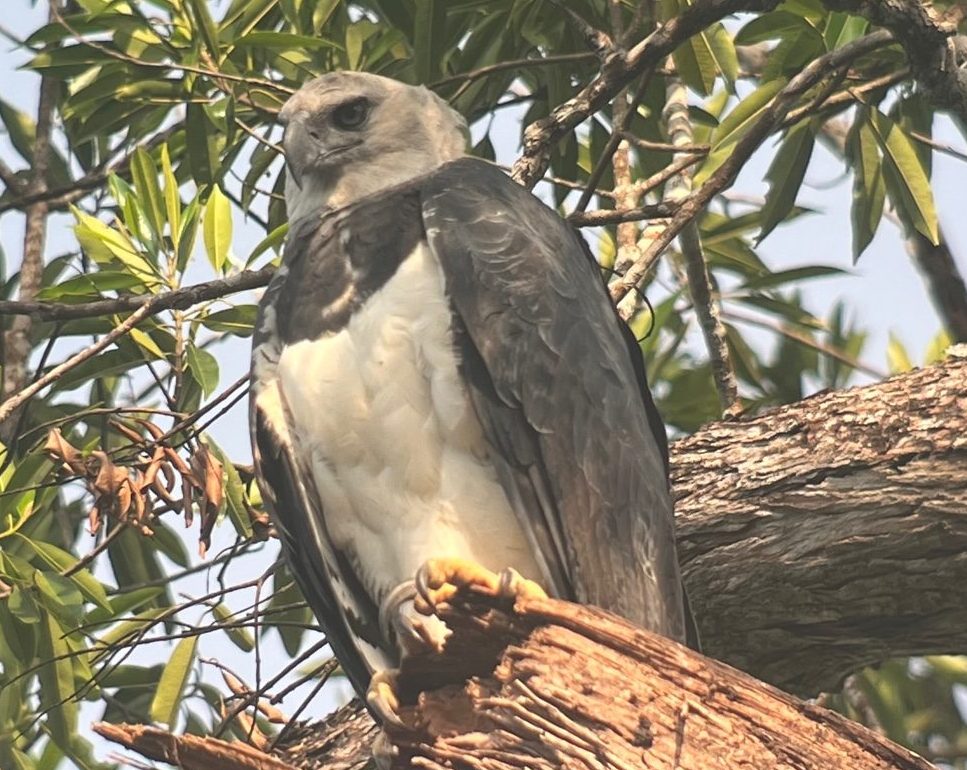
When you ask someone what they know about Brazil, you will likely hear answers about the world-famous Rio de Janeiro Carnival, the vast Amazon River, or even Iguazu Falls along the border with Paraguay and Argentina. Brazil ranks fifth largest country by area, occupying about half of South America. There is an attraction that could quickly draw anyone for a visit. Ours, as always, are birds. The quest to see 10,000 is a dream we will likely never accomplish, but it is fun to try. Brazil is a great country to see the huge and beautiful diversity of species and add some numbers to the list.
This trip brought us to Manaus, once called the “Paris of the Tropics. ” It is the capital and largest city of Amazonas. Manaus has many exciting things to see, including the famed “meeting of the waters,” where the Solimões and Negro rivers meet to form the Amazon River. I also experienced the history of this city, which was once the most prosperous city in South America due to the rubber trade and wealthy Europeans that settled there, bringing over art, architecture, and culture from home. Europeans had a presence in Manaus since 1499, when the Spanish arrived at the mouth of the Amazon River and then went on to colonize the northern region of Brazil.
Manaus is one of the entry points into the Amazon Rainforest, the world’s largest and most species-rich tropical rainforest. More than one-third of all species live in the Amazon rainforest. So, in our effort to see as much as we could, we took about a two-hour drive north to Presidente Figueiredo. Hotel Iracema Falls was the base camp for a few days, with day trips nearby.
One day, we took off to another local lodge, Aldeia Marí Marí, where you can easily see Guianan Cocks-of-the-rock at a lekking site. We trekked through the spongy understory past a Bronzy Jacamar to the staked-out lekking site, found a seat wherever we could, and patiently waited to watch the show. Seven males came out to the dance floor and looked around for females.
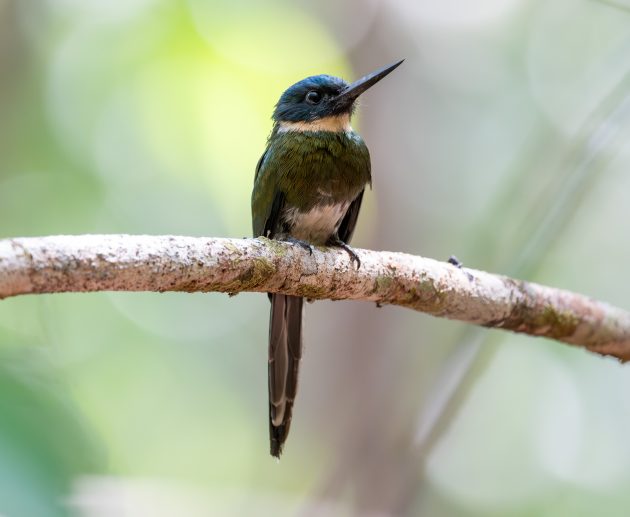
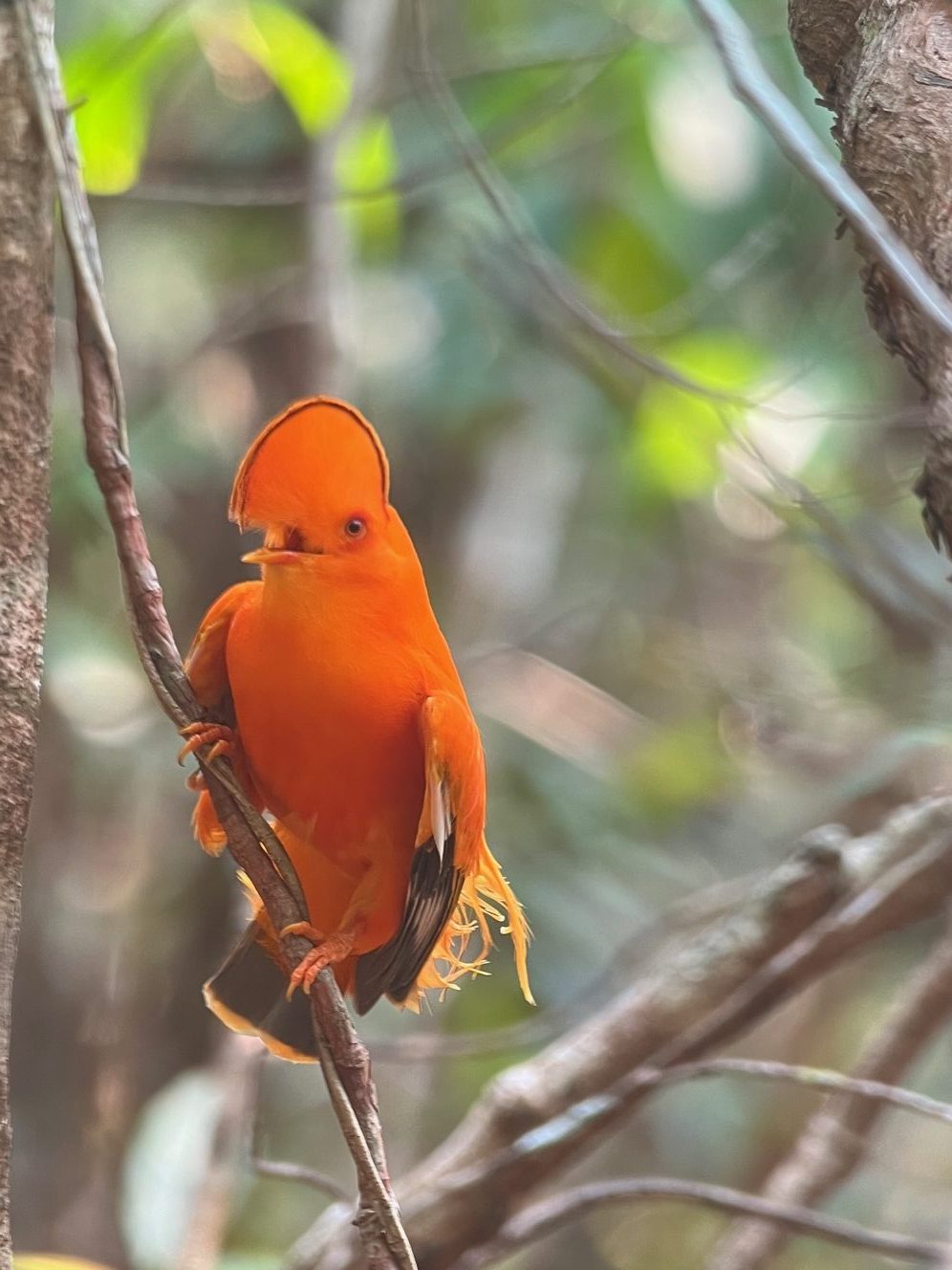
After an hour, we gave up as the females never appeared, so the males didn’t dance. Fortunately, back at the lodge, there was a Spangled Cotinga and Black-necked Aracari to entertain us.
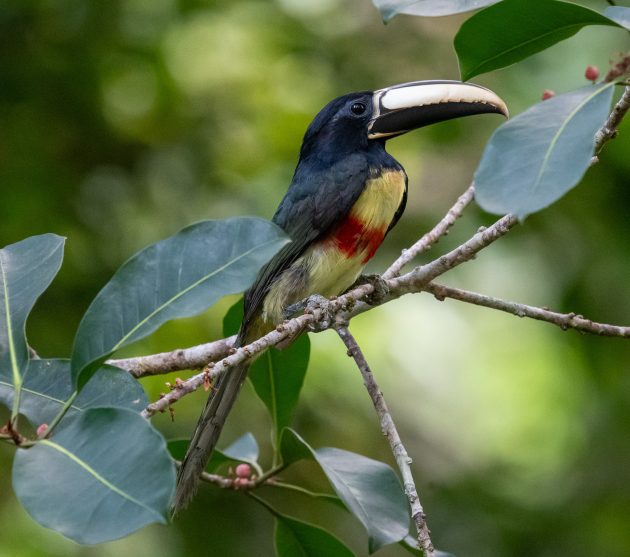
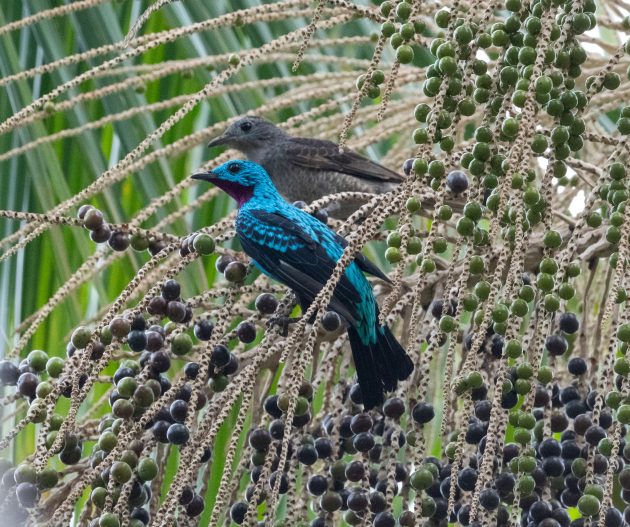
The next day, our guides gave us a special surprise. They had gotten word about a Harpy Eagle nest on private property that the owner permits groups to view. Harpy Eagles are bucket list birds that even non-birders know about. Adults can weigh up to 20 pounds and have a wingspan of over 7 feet. They are a contender for the largest eagle alongside the Philippine Eagle and Steller’s Sea Eagle. They are powerful, with the largest talon of any living eagle, and are often found dining on tree-dwelling mammals like sloths and monkeys. So, we were pretty excited when they revealed that we would stake out the nest.
We arrived at the entrance trail off a gravel road at 7:00 am. The trail was more undeveloped than others we had traversed, but it was not lengthy before we stood a few hundred feet away from a ginormous nest at the crook of a massive tree. You could barely make out the fuzzball of a chick as it tromped around the nest, waiting for a parent to return. Our guide warned us that the female had fed the chick on Monday, and they do not return every day. We were there on a Wednesday, so I felt like the chances were good we might see an adult. As we waited to see if an adult would appear, other birds kept us company, like a Black-eared Fairy and a Guianan Toucanet.
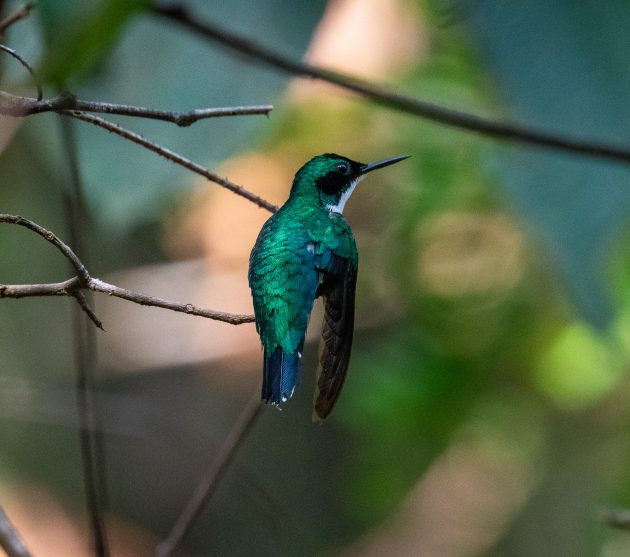
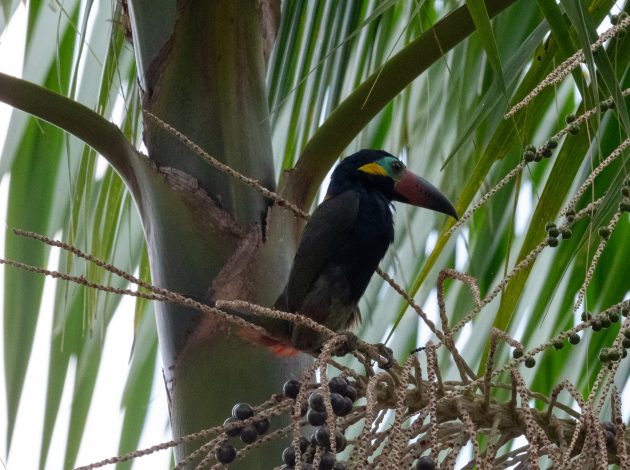
15-30 minutes later, the female arrived and cared for the chick before hopping up to a perch and surveying the territory. It was imposing and a bit terrifying for the adult to turn in your direction at the accidental crunch of a twig underfoot. After about an hour of taking it all in, we headed out, still amazed by this incredible view.
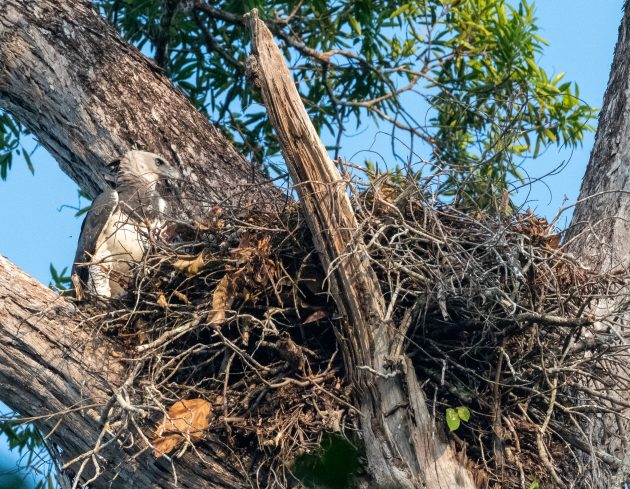
On our last day at Hotel Iracema Falls, we went to the main entrance road at 5:00 am, just before sunrise, hoping to see a Black Curassow and Grey-winged Trumpeters. So, we wandered the road and listened, one of my favorite ways in bird. Variable Chachalacas were hopping around the trees, and a beautiful Black Nunbird was nearby. Finally, after waiting and strolling, our guides heard the Black Curassows, and then suddenly, they zipped overhead across the road. While attempting to get a better look, the bus driver rang our guide and asked what the birds behind the bus were. It ended up being the trumpeters lurking behind the bus!
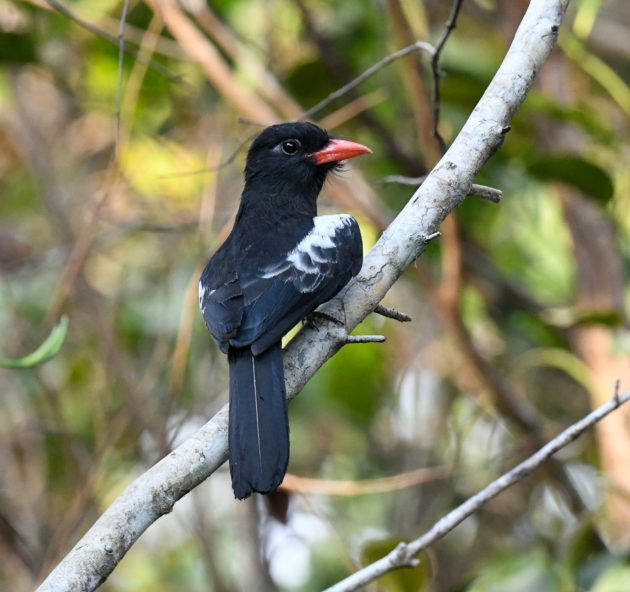
There is so much to see in Brazil; this is just a sample of some of the four hundred species we saw.












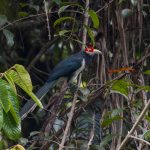
Leave a Comment